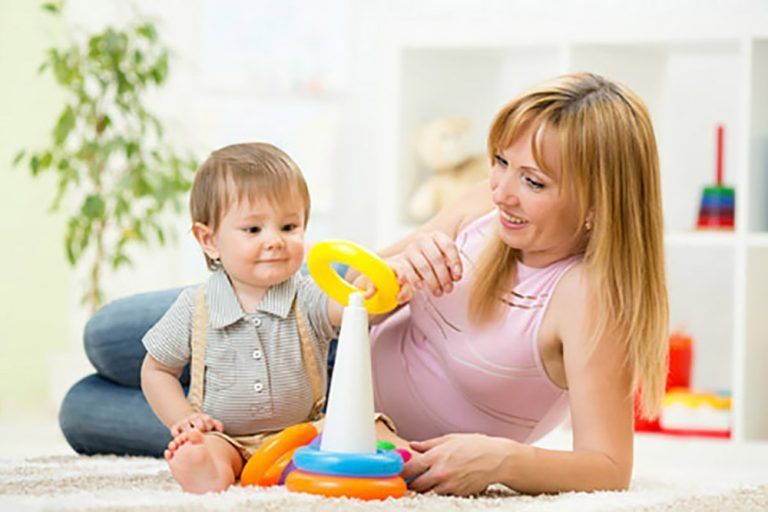Creative Activities for Nannies to Engage Kids in 2025: Fun, Educational & Research-Backed Ideas
7 minute read

Nannies are more than caregivers — they are mentors, role models, and creative guides who help shape children’s early years. The best activities for kids do more than fill time; they spark curiosity, support learning, and help build social and emotional skills.
In 2025, families are increasingly looking for nannies who can offer enriching, screen-free, and development-focused experiences. This guide draws on expert advice and research to help nannies plan engaging activities that support children’s growth in a fun and memorable way.
1. Artistic Expression: Inspiring Creativity Through Crafts
Art projects help children develop fine motor skills, problem-solving abilities, and self-expression. According to Harvard’s Center on the Developing Child, “Creative play strengthens brain architecture by allowing children to experiment, take risks, and express themselves freely.”
Ideas to try:
- Nature Collages: Collect leaves, flowers, shells, or pebbles during an outdoor walk. Back home, arrange them on cardboard to create seasonal collages. Discuss the textures and colours to expand vocabulary.
- DIY Puppets: Using socks, felt, or paper bags, children can design and decorate their own puppets. Stage a puppet show to build storytelling skills and boost public speaking confidence.
- Recycled Art Challenge: Give children a box of safe recycled items (egg cartons, cardboard tubes, scrap fabric) and a theme — e.g., “build a city” or “make an animal.”
Bonus tip: Keep an “art box” stocked with supplies so creativity can happen anytime.
2. Science Exploration: Fun Experiments for Curious Minds
Children are naturally drawn to cause-and-effect play. Early exposure to simple science activities builds a foundation for STEM skills later in life. Dr. Kathryn Hirsh-Pasek, a developmental psychologist at Temple University, notes: “Hands-on experiments make abstract concepts concrete for children and develop both cognitive and problem-solving skills.”
Ideas to try:
- Volcano Eruption: Combine baking soda, vinegar, and a drop of food colouring for a safe and exciting reaction. Use this to introduce basic chemistry concepts.
- Plant Growth Observation: Plant beans or sunflower seeds in clear cups so children can see the roots grow. Encourage daily care and create a growth chart.
- Sink or Float: Gather household objects and predict whether they will sink or float in water. Discuss the results.
Learning link: Tie these experiments to real-world examples — for instance, connect plant growth to the fruit and vegetables children eat.
3. Literary Adventures: Bringing Books to Life
Reading aloud builds language skills, but making it interactive and immersive multiplies the benefits. The Australian Children’s Literacy Foundation highlights that “interactive reading fosters deeper comprehension and nurtures a lifelong love of reading.”
Ideas to try:
- Story Creation: After reading a story, help children invent a sequel or alternative ending. Let them illustrate it and bind the pages into their own book.
- Character Dress-Up: Pick a favourite book, then gather costumes or props so children can act out key scenes.
- Story Stones: Paint small rocks with images (a tree, a dog, a rainbow) and use them as prompts to make up stories.
Pro tip: Create a rotating “story basket” with books linked to the season or child’s interests.
4. Culinary Creativity: Learning in the Kitchen
Cooking offers practical maths, science, and health education in one activity. The Stephanie Alexander Kitchen Garden Foundation in Australia advocates for involving children in food prep, noting it “fosters independence and builds positive food relationships from an early age.”
Ideas to try:
- Fruit Art: Slice fresh fruit and let children design animals, flowers, or shapes on a plate.
- Bake-Off Challenge: Decorate cupcakes or cookies with icing, sprinkles, and fruit. Turn it into a friendly competition.
- Smoothie Lab: Offer different fruits, yoghurts, and toppings so kids can invent their own smoothie recipe.
Safety reminder: Always supervise closely, especially around heat or sharp tools. Use child-safe utensils when possible.
5. Outdoor Adventures: Connecting with Nature
Spending time outside supports physical health, sensory development, and emotional wellbeing. A study published in Frontiers in Psychology found that “nature play improves focus, reduces stress, and promotes resilience in children.”
Ideas to try:
- Scavenger Hunt: Create a list of items to find in the garden or park — e.g., “something soft,” “something round,” “something red.”
- Mini Garden: Help children plant herbs or vegetables in pots. Discuss how sunlight, water, and soil help plants grow.
- Obstacle Course: Use household items like ropes, buckets, and cushions to build a safe outdoor course.
Seasonal twist: In summer, add water play elements; in winter, include nature observation like spotting bird species.
6. Mindfulness & Movement: Building Emotional Resilience
Mindfulness practices can help children regulate emotions and develop self-awareness. According to Beyond Blue Australia, “Mindfulness can improve children’s attention, reduce anxiety, and increase positive social behaviours.”
Ideas to try:
- Kids Yoga: Use animal-inspired poses (cat, dog, butterfly) and weave them into a short story.
- Mindful Breathing: Teach children to breathe in slowly for a count of three, then breathe out for three. Practice when they feel overwhelmed.
- Gratitude Circle: Each day, take turns sharing one thing you’re grateful for.
Tip: Keep mindfulness sessions short and lighthearted for younger children.
7. STEM Fun: Problem Solving Through Play
STEM activities encourage critical thinking, innovation, and persistence. The Australian Government’s Early Years Learning Framework emphasises the importance of “learning through active investigation and problem solving.”
Ideas to try:
- LEGO Challenges: Give children a goal, like building a bridge or a tower that can hold weight.
- Marble Run: Use cardboard tubes, tape, and boxes to design a marble run together.
- Beginner Coding: Introduce coding apps or programmable robots designed for kids, like Bee-Bot or Scratch Jr.
Extension: Incorporate challenges that require testing and adjusting designs to encourage resilience.
Conclusion: Beyond Busy Work
The most memorable activities are those that balance fun with learning. As a nanny, your role is to create meaningful experiences that support a child’s curiosity, independence, and joy.
By incorporating a mix of art, science, reading, cooking, nature, mindfulness, and STEM into your daily routine, you can provide the kind of rich, engaging environment that parents value and children thrive in.
As Harvard’s Center on the Developing Child reminds us: “Children’s brains are built, not born ready. Early experiences shape the architecture of the developing brain.”
So go beyond keeping children “busy” — inspire them, challenge them, and watch them grow.
Frequently Asked Questions
Q1: What are the best activities for nannies to keep kids engaged?
Q1: What are the best activities for nannies to keep kids engaged?
The best activities balance fun and learning, such as crafts, outdoor play, cooking, science experiments, and reading-based games.
Q2: How can nannies make activities educational?
Q2: How can nannies make activities educational?
Incorporate elements like counting, measuring, vocabulary, or problem-solving into everyday activities to promote cognitive development.
Q3: What creative indoor activities work for rainy days?
Try puppet shows, recycled art projects, indoor scavenger hunts, LEGO challenges, and storytelling games.
Q4: How do creative activities help child development?
They build fine motor skills, boost imagination, encourage problem-solving, and support emotional regulation.
Q5: Can nannies do science experiments safely at home?
Yes, simple experiments like baking soda volcanoes, plant growth tracking, and sink-or-float tests are safe with supervision.
Q6: What’s the benefit of cooking with children?
Cooking teaches maths, science, and nutrition while building independence and healthy eating habits.
Q7: How often should nannies introduce new activities?
Aim for a mix of familiar favourites and one or two new activities each week to keep things fresh and exciting.
Q8: What outdoor activities are best for young children?
Scavenger hunts, gardening, water play, and obstacle courses are great for physical activity and sensory exploration.
Q3: What creative indoor activities work for rainy days?
Q3: What creative indoor activities work for rainy days?
Try puppet shows, recycled art projects, indoor scavenger hunts, LEGO challenges, and storytelling games.
Q4: How do creative activities help child development?
Q4: How do creative activities help child development?
They build fine motor skills, boost imagination, encourage problem-solving, and support emotional regulation.
Q5: Can nannies do science experiments safely at home?
Q5: Can nannies do science experiments safely at home?
Yes, simple experiments like baking soda volcanoes, plant growth tracking, and sink-or-float tests are safe with supervision.
Q6: What’s the benefit of cooking with children?
Q6: What’s the benefit of cooking with children?
Cooking teaches maths, science, and nutrition while building independence and healthy eating habits.
Q7: How often should nannies introduce new activities?
Aim for a mix of familiar favourites and one or two new activities each week to keep things fresh and exciting.
Q8: What outdoor activities are best for young children?
Scavenger hunts, gardening, water play, and obstacle courses are great for physical activity and sensory exploration.
Q7: How often should nannies introduce new activities?
Q7: How often should nannies introduce new activities?
Aim for a mix of familiar favourites and one or two new activities each week to keep things fresh and exciting.
Q8: What outdoor activities are best for young children?
Q8: What outdoor activities are best for young children?
Scavenger hunts, gardening, water play, and obstacle courses are great for physical activity and sensory exploration.










